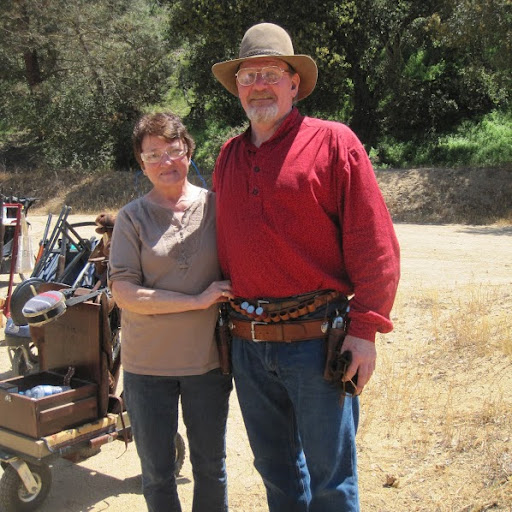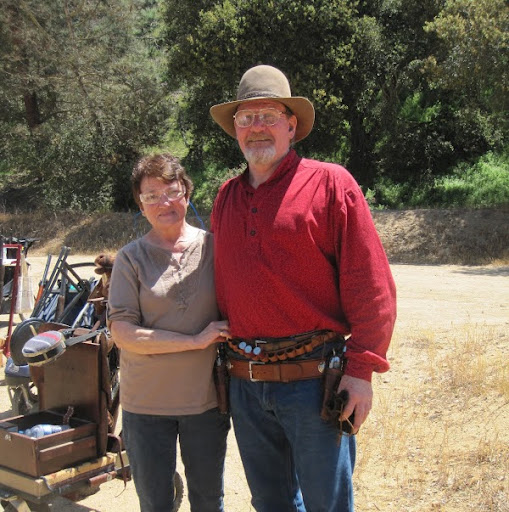Brian E Root
age ~44
from Barboursville, VA
Brian Root Phones & Addresses
- Barboursville, VA
- Charlottesville, VA
- Benton, PA
- Chicago, IL
- Evanston, IL
- 444 W Fullerton Pkwy APT 306, Chicago, IL 60614
Work
-
Company:Microlab diagnostics, incSep 2011
-
Position:Director of systems integration
Education
-
School / High School:Northwestern University2004
-
Specialities:Ph.D. in Materials Science & Engineering
Us Patents
-
Optical Approach For Microfluidic Dna Electrophoresis Detection
view source -
US Patent:20110229897, Sep 22, 2011
-
Filed:Mar 4, 2011
-
Appl. No.:13/064091
-
Inventors:John W. Pettit - Derwood MD, US
James P. Landers - Charlottesville VA, US
Joan M. Bienvenue - Fredericksburg VA, US
Daniel J. Marchiarullo - North Haledon NJ, US
Brian E. Root - Charlottesville VA, US
Orion N. Scott - Charlottesville VA, US -
Assignee:LOCKHEED MARTIN CORPORATION - BETHESDA MD
-
International Classification:C12Q 1/68
C12M 1/34 -
US Classification:435 612, 4352872
-
Abstract:Aspects of the disclosure provides a DNA analyzer to facilitate an integrated single-chip DNA analysis. The DNA analyzer includes an interface for coupling a microfluidic chip to the DNA analyzer. The microfluidic chip includes a first domain configured for polymerase chain reaction (PCR) amplification of DNA fragments, and a second domain fluidically coupled to the first domain to receive the DNA fragments and perform electrophoretic separation of the DNA fragments. The DNA fragments are tagged with fluorescent labels. The DNA analyzer includes a detection module to excite the fluorescent labels to emit fluorescence and detect the emitted fluorescence. The detection module includes a laser source, a set of optical elements, a filter module and a photo-detector.
-
Method And System For Sample Collection, Storage, Preparation And Detection
view source -
US Patent:20230072999, Mar 9, 2023
-
Filed:Aug 5, 2022
-
Appl. No.:17/881802
-
Inventors:- Southampton, GB
Christopher Birch - Charlottesville VA, US
Daniel Mills - Charlottesville VA, US
Brian Root - Charlottesville VA, US
James Landers - Charlottesville VA, US
Jingyi Li - Charlottesville VA, US
Matthew Yeung - Mount Waverley, AU
David Saul - Dunedin, AU
David Vigil - Mount Waverley, AU
Andrew Guy - Mount Waverley, AU
Stan Wada - Mount Waverley, AU
Betina De Gorordo - Mount Waverley, AU
Steward Dodman - Mount Waverley, AU
Tom Moran - Southampton, GB
Stuart Knowles - Mount Waverley, AU
Fernando Dias - Mount Waverley, AU
Rick Gardner - Mount Waverley, AU -
International Classification:B01L 3/00
G01N 33/569
G01N 33/543
G01N 1/18
G01N 1/40
B01L 7/00 -
Abstract:A collection device for a biological sample to capture target compounds such as viruses or other pathogens or particles for testing from within the sample and move the captured target compound to a separate chamber for subsequent processing. The collection device can include an openable substance blister including capture particles located in a cup interior. Capture particles can attract and bind the target compounds from the sample. An extraction tube extracts any nucleic acid from the target compound for storage or subsequent amplification and testing to confirm presence of known microorganisms. The extraction tube can comprise a heat-deformable material and can be connected to a microfluidic cartridge for further processing of nucleic acid including, amplification and detection. The microfluidic cartridge includes valves and a plurality of chambers for amplification.
-
Cartridge Interface Module
view source -
US Patent:20200002745, Jan 2, 2020
-
Filed:Feb 7, 2019
-
Appl. No.:16/270218
-
Inventors:- Bethesda MD, US
- Hamilton, NZ
James LANDERS - Charlottesville VA, US
Douglas J. SOUTH - Rockville MD, US
Brian E. ROOT - Charlottesville VA, US -
Assignee:LOCKHEED MARTIN CORPORATION - Bethesda MD
ZYGEM CORPORATION LTD. - Hamilton -
International Classification:C12Q 1/686
-
Abstract:A cartridge interface module (CIM), configured to engage with a removable microfluidic cartridge in a nucleic acid analyzer system can include a fluidics component, which is configured to initiate and support a liquid extraction of nucleic acids from a biological sample contained in the removable microfluidic cartridge. The CIM also includes a polymerase chain reaction (PCR) assembly component which can be configured to initiate and support amplification of the extracted nucleic acids. The CIM may also include a high voltage electrodes component that is configured to initiate and support separation of the amplified nucleic acids into nucleic acid fragments in a separation channel of the removable microfluidic cartridge. The CIM also includes a detection optics component that can be configured to collect, detect, and direct label nucleic acid fragments. The CIM is configured to integrate with a microfluidic chip architecture of an inserted removable microfluidic cartridge.
-
Devices And Methods For Extraction, Separation And Thermocycling
view source -
US Patent:20180304253, Oct 25, 2018
-
Filed:Oct 13, 2016
-
Appl. No.:15/768115
-
Inventors:- Charlottesville VA, US
Jacquelyn A. DuVall - Raleigh NC, US
Delphine Le Roux - Barboursville VA, US
Brian Root - Charlottesville VA, US
Daniel MIlls - Charlottesville VA, US
Daniel A. Nelson - Charlottesville VA, US
An-chi Tsuei - Charlottesville VA, US
Brandon L. Thompson - Charlottesville VA, US
Jingyi Li - Charlottesville VA, US
Christopher Birch - Charlottesville VA, US -
International Classification:B01L 3/00
B01L 7/00
G01N 27/447 -
Abstract:A method to extract, amplify and separate nucleic acid in a microfluidic device having a plurality of chambers and channels can include a) introducing cells having nucleic acid to a first chamber of the microfluidic device and subjecting the cells in the first chamber to conditions that lyse the cells. The method can further include b) subjecting the first chamber to centrifugal force, thereby allowing the lysate or a portion thereof having nucleic acid to be distributed to a second chamber through a first channel in the microfluidic device. The method can also include c) combining the lysate or the portion thereof and reagents for amplification of the nucleic acid, thereby providing a second mixture. The method can also include d) subjecting the second chamber to centrifugal force, thereby allowing gas to be expelled from the second mixture.
-
Non-Contact Infrared Thermocycling
view source -
US Patent:20150151302, Jun 4, 2015
-
Filed:Dec 4, 2013
-
Appl. No.:14/096273
-
Inventors:- Charlottesville VA, US
- Bethesda MD, US
James Landers - Charlottesville VA, US
Brian Root - Charlottesville VA, US
Orion Scott - Charlottesville VA, US -
Assignee:ZyGEM CORPORATION LTD. - Charlottesville VA
LOCKHEED MARTIN CORPORATION - Bethesda MD -
International Classification:B01L 7/00
C12Q 1/68 -
Abstract:A microfluidic chip includes one or more reaction chambers to hold fluids for chemical or biochemical reactions, such as PCR. A non-contact heat source heats the reaction chamber and the fluid, such that the heat source does not contact the reaction chamber or the fluid. The heat source can heat the reaction chamber and the fluid separately, where the reaction chamber and the fluid separately absorb heat radiation from the heat source. A temperature sensor acquires a temperature of the reaction chamber and/or the fluid. Control circuitry controls the heat source according to a cycling profile for the reaction in the fluid to cycle the heat source between heating and not heating the reaction chamber and the fluid based on the temperature acquired by the temperature sensor. Cooling can be provided passively or actively.
-
Cartridge Interface Module
view source -
US Patent:20140295441, Oct 2, 2014
-
Filed:Mar 27, 2014
-
Appl. No.:14/227645
-
Inventors:- Hamilton, NZ
- Bethesda MD, US
James Landers - Charlottesville VA, US
Douglas J. South - Rockville MD, US
Brian E. Root - Charlottesville VA, US -
Assignee:ZYGEM CORPORATION LTD. - Hamilton
LOCKHEED MARTIN CORPORATION - Bethesda MD -
International Classification:C12Q 1/68
-
US Classification:435 612, 4352872
-
Abstract:A cartridge interface module (CIM), configured to engage with a removable microfluidic cartridge in a nucleic acid analyzer system can include a fluidics component, which is configured to initiate and support a liquid extraction of nucleic acids from a biological sample contained in the removable microfluidic cartridge. The CIM also includes a polymerase chain reaction (PCR) assembly component which can be configured to initiate and support amplification of the extracted nucleic acids. The CIM may also include a high voltage electrodes component that is configured to initiate and support separation of the amplified nucleic acids into nucleic acid fragments in a separation channel of the removable microfluidic cartridge. The CIM also includes a detection optics component that can be configured to collect, detect, and direct label nucleic acid fragments. The CIM is configured to integrate with a microfluidic chip architecture of an inserted removable microfluidic cartridge.
Name / Title
Company / Classification
Phones & Addresses
ROOT'S PLASTERING LLC
SYMMES VALLEY BIDDY LEAGUE BB, INC
Resumes

Director Of Project Management And Capture Services
view sourceLocation:
Chicago, IL
Industry:
Higher Education
Work:
University of Virginia
Director of Project Management and Capture Services
Microlab Diagnostics Subsidiary of Zygem Corp Oct 2011 - Sep 2014
Director of Systems Integration
Microlab Diagnostics Mar 2009 - Sep 2011
Scientist
Director of Project Management and Capture Services
Microlab Diagnostics Subsidiary of Zygem Corp Oct 2011 - Sep 2014
Director of Systems Integration
Microlab Diagnostics Mar 2009 - Sep 2011
Scientist
Education:
Northwestern University 2004 - 2009
Doctorates, Doctor of Philosophy, Materials Science, Engineering Lafayette College 2000 - 2004
Bachelors, Bachelor of Science, Chemical Engineering
Doctorates, Doctor of Philosophy, Materials Science, Engineering Lafayette College 2000 - 2004
Bachelors, Bachelor of Science, Chemical Engineering
Skills:
Biotechnology
Microfluidics
Chemistry
R&D
Purification
Commercialization
Polymers
Dna
Assay Development
Nanotechnology
Microscopy
Protein Chemistry
Technology Transfer
Science
Lifesciences
Life Sciences
Biochemistry
Molecular Biology
Research and Development
Microfluidics
Chemistry
R&D
Purification
Commercialization
Polymers
Dna
Assay Development
Nanotechnology
Microscopy
Protein Chemistry
Technology Transfer
Science
Lifesciences
Life Sciences
Biochemistry
Molecular Biology
Research and Development

Brian Root
view source
Brian Root
view source
Brian Root
view source
Brian Root
view sourceSkills:
Microsoft Office
Customer Service
Microsoft Excel
Leadership
Microsoft Word
Research
Powerpoint
Social Media
Marketing
Customer Service
Microsoft Excel
Leadership
Microsoft Word
Research
Powerpoint
Social Media
Marketing

Brian Root
view source
North Shore
view sourceLocation:
Raleigh, North Carolina
Industry:
Education Management
Education:
North Carolina State University 2004 - 2010
B.A, History
B.A, History
Googleplus

Brian Root
Work:
AMEY

Brian Root
Work:
Seattle Fire Department - Fireman

Brian Root

Brian Root

Brian Root

Brian Root

Brian Root

Brian Root
Youtube
Myspace
Plaxo

Brian Root
view source
Brian Root
view sourcecreek trail rochester n.y.
Flickr
Classmates

Brian Root
view sourceSchools:
Michigan Lutheran Seminary High School Saginaw MI 1971-1975
Community:
Glenda Case

Brian Root
view sourceSchools:
Parchment High School Parchment MI 1964-1968

Brian Root
view sourceSchools:
Patrick Henry Elementary School Chicago IL 1976-1981
Community:
Angela Specker, Gordon Green, Sandy Wagner

Brian Root
view sourceSchools:
Reavis High School Burbank IL 1988-1992
Community:
Brian Dunne, Gerald Braasch

Beaconsfield High School,...
view sourceGraduates:
Brian Root (1966-1970),
Carolyn Edge (1978-1982),
John Rizopoulos (1977-1981),
Yves Girouard (1967-1971),
Debbie Aldridge (1967-1971),
Adrian Dumont (1995-1999)
Carolyn Edge (1978-1982),
John Rizopoulos (1977-1981),
Yves Girouard (1967-1971),
Debbie Aldridge (1967-1971),
Adrian Dumont (1995-1999)

Michigan Lutheran Seminar...
view sourceGraduates:
Brian Kattle (1986-1987),
Ronald Zahn (1953-1957),
Brian Root (1971-1975),
Jacki Rohac (1999-2003),
Matthew Lamrouex (1979-1983),
Esther Strunk (1950-1954)
Ronald Zahn (1953-1957),
Brian Root (1971-1975),
Jacki Rohac (1999-2003),
Matthew Lamrouex (1979-1983),
Esther Strunk (1950-1954)

University of Pittsburgh,...
view sourceGraduates:
Brian Bigi (1990-1995),
Cheryl Yevick (1983-1987),
Brian Root (2000-2004),
Melinda Hyatt (1999-2001)
Cheryl Yevick (1983-1987),
Brian Root (2000-2004),
Melinda Hyatt (1999-2001)

Patrick Henry Elementary ...
view sourceGraduates:
Brian Root (1976-1981),
Jennifer Farmakis (1984-1988),
Marcy Espinosa (1980-1986),
Michael Stark (1967-1968),
Danny Durazno (1998-2002)
Jennifer Farmakis (1984-1988),
Marcy Espinosa (1980-1986),
Michael Stark (1967-1968),
Danny Durazno (1998-2002)

Brian Root
view source
Brian Root
view source
Brian Root
view source
Brian Root
view source
Brian Root
view source
Brian Root
view source
Brian Root
view source
Brian Root
view sourceGet Report for Brian E Root from Barboursville, VA, age ~44













